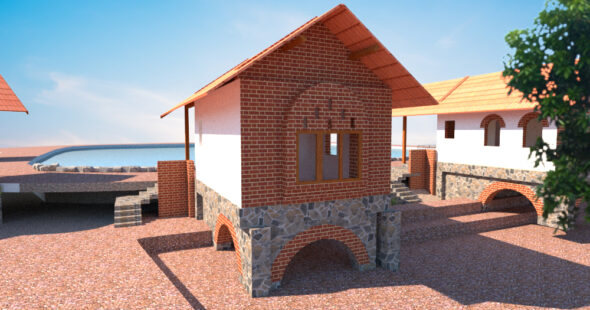
Reinforced Cement Concrete (RCC) has become the dominant material in modern construction. While strong and versatile, it comes with high environmental costs—massive carbon emissions, heat retention, and eventual structural challenges if not maintained properly. Fortunately, traditional alternatives like stone and lime offer smarter, eco-friendly solutions that are equally durable and far more sustainable. This article explores when it makes sense to choose stone or lime over RCC, and how these timeless materials are making a comeback in contemporary architecture.
The Hidden Costs of RCC
Although widely used, RCC is not always the ideal choice. Its drawbacks include:
High Carbon Footprint: Cement manufacturing is energy-intensive and polluting.
Thermal Discomfort: Concrete traps heat, making interiors warmer.
Maintenance Issues: Cracks, corrosion of steel reinforcement, and water seepage often appear over time.
Shorter Lifespan: Compared to traditional stone or lime structures, RCC can deteriorate faster without constant upkeep.
Stone: A Timeless Building Block
Stone masonry has been the backbone of architecture for centuries, from ancient temples to heritage homes.
Advantages of Stone:
Exceptional durability, lasting hundreds of years.
Low maintenance and weather resistance.
Natural thermal insulation, keeping interiors cool.
Rich aesthetic appeal with a variety of textures and colors.
Stone is especially suitable for foundations, load-bearing walls, and structures in regions prone to extreme weather.
Lime: The Breathable Alternative
Lime has long been a cornerstone of sustainable building. Unlike cement, it works with nature rather than against it.
Advantages of Lime:
Breathability: Prevents moisture buildup and dampness.
Strength Over Time: Lime continues to harden as it ages.
Eco-Friendly: Produces significantly less carbon compared to cement.
Healthier Interiors: Natural antimicrobial properties improve indoor air quality.
Professional application by a Lime Plaster Service in India ensures that lime is used effectively, creating walls and finishes that stand the test of time.
When to Choose Stone or Lime Over RCC
Foundations in Moist Regions: Stone foundations are more resilient against waterlogging than RCC.
Load-Bearing Walls: Thick lime-plastered stone walls provide structural integrity without the need for heavy concrete.
Eco-Friendly Homes: For clients prioritizing sustainability, lime and stone drastically reduce the building’s environmental impact.
Restoration and Heritage Projects: RCC is unsuitable for traditional architecture, whereas lime seamlessly integrates with historic structures.
Aesthetic Designs: Exposed stone walls and polished lime plasters add timeless elegance that RCC can’t replicate.
The Role of Design Expertise
While stone and lime are strong alternatives, they require careful planning and execution. An Architectural design consultant can help identify where these materials can replace RCC without compromising structural safety. Consultants also ensure that local craftsmanship is utilized, combining tradition with modern innovation.
Case in Point: Blending Tradition with Modernity
Many contemporary homes are now using a hybrid approach—stone foundations with lime plaster walls and selective RCC elements for structural reinforcements. This balance reduces carbon emissions, enhances comfort, and creates homes that age gracefully.
Conclusion
RCC may dominate the construction industry today, but stone and lime are proving themselves as smarter, sustainable alternatives. They offer unmatched durability, natural thermal comfort, and a minimal ecological footprint.


